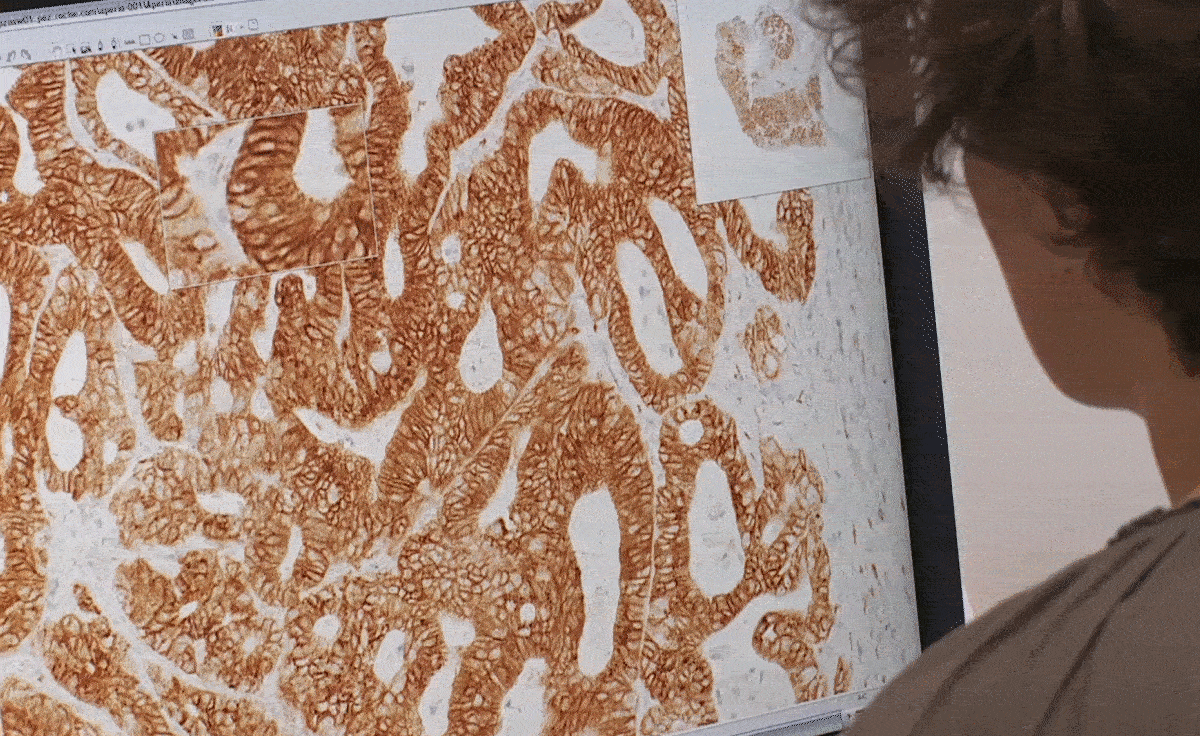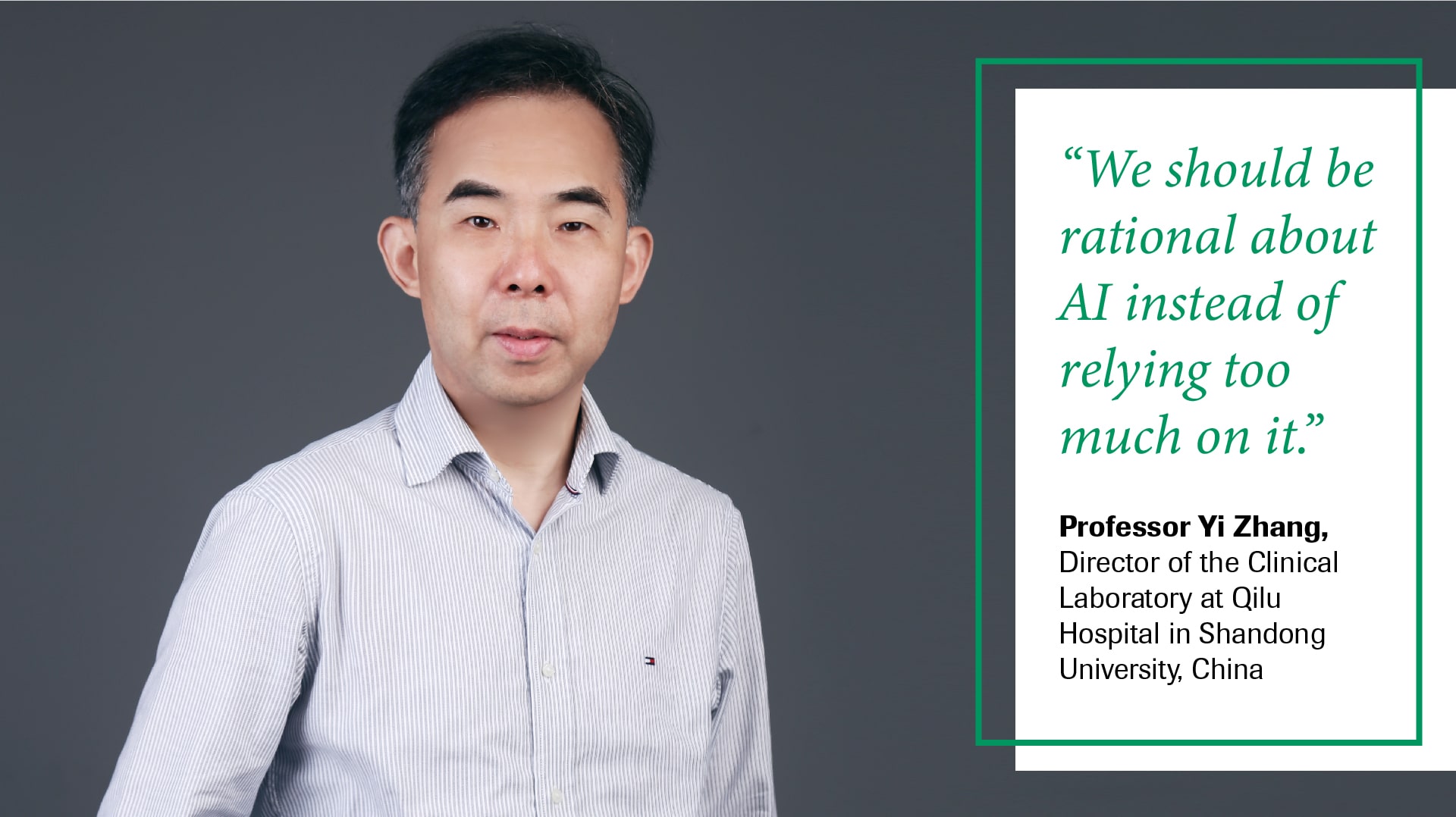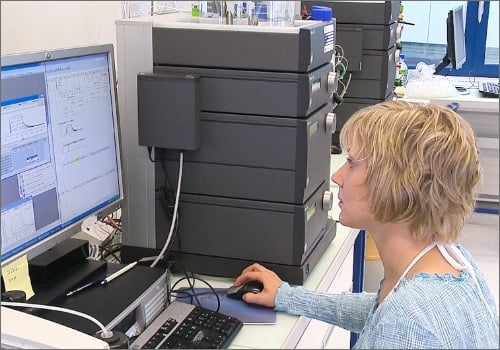All eyes are on AI now, as labs powered by machine learning drive drug discovery and diagnostics. Whether AI in healthcare is providing answers that aid clinical decisions or, as seen during COVID-19, facilitating vaccine research trials, diagnostic testing continues to play a critical role in healthcare delivery.
In the case of the Moderna vaccine trials, antibody testing was used to facilitate the quantitative measurement of SARSCoV-2 antibodies and help to establish a correlation between vaccine-induced protection and levels of anti-receptor binding domain (RBD) antibodies. Any potential vaccine for SARS-CoV-2 would work (amongst other mechanisms) by triggering the immune response to develop neutralising antibodies in the person receiving the vaccine. Meanwhile, testing would baseline and assess any change in antibody levels.

Rise of the AI-powered lab
It is not just in the fight against new diseases that progress has been made. Labs have also helped to push scientific progress forward by decades in areas such as cancer.
By identifying and developing innovative predictive diagnostics to target those patients who are more likely to respond to specific therapies, testing enables the early detection and treatment of patients, thus significantly improving outcomes.
But how can health systems provide quality care when the pool of cancer patients is exponentially higher than the number of healthcare professionals? The solution — applying AI to diagnostics.
Doing this can help increase the number of cases reviewed by pathologists, improve accuracy by reducing human error, and enable personalised treatment plans. Ergo, such an approach can save even more lives — and is. Today, automated digital pathology algorithms use AI to support pathologists in making fast and accurate patient diagnoses in breast cancer.
Amplification in the HER2 gene, which occurs in as many as 20 percent1 of the nearly 2.3 million cases of breast cancer diagnosed globally each year, is responsible for aggressive growth in some patients. Identifying this amplification is important in determining which patients may benefit from targeted treatment. Using AI-based image analysis algorithms can support pathologists in improving efficiency and precision.
This also holds true during a lockdown when remote care is the only option. In India, Dr Sangeeta Desai, Professor and Head of the Department of Pathology at Tata Memorial Centre, says she and her team quickly shifted to a remote sign-out approach during the ongoing pandemic to allow them to analyse the slides and make diagnoses from home. They reported nearly 550 cancer cases this way, providing patient care that would not have been possible without digital pathology.
That’s not all. As Professor Yi Zhang, Director of the Clinical Laboratory at Qilu Hospital in Shandong University, China believes, clinical lab data can be aggregated and analysed to improve patient care and healthcare system management.
Professor Zhang’s lab, which is affiliated with one of China’s top teaching hospitals, makes considerable effort to clean and classify such data in order to facilitate data mining and artificial intelligence applications.
“The integrity, coherence, integration of these data, as well as the scientific and structured preservation of data, are very important for the subsequent data mining,” he says. By carefully managing clinical lab data and mining them for insights, lab professionals can develop new tools for disease prediction, preventative care, precision medicine, clinical decision support, clinical research, utilisation management and more.
Introducing AI in Lab Testing
It is more pivotal than ever to accelerate AI adoption by lab professionals or, at the very least, begin to augment their work with AI.
That AI is complex, expensive and often requires significant changes to operational processes is a given. More than that, it demands an ultra-specialised talent pool that currently stands at just 477,956 worldwide.
However, this does not mean that labs cannot take small steps, or partially implement AI, to pave the way for large-scale adoption down the road. For instance, labs can assuage fears of being replaced by AI by illustrating how it evolves existing roles, and crucially, makes life easier for its human “co-workers”. But it is not a silver bullet for all healthcare challenges. As Professor Yi Zhang, Director of the Clinical Laboratory says, “We should be rational about AI instead of relying too much on it.”

Ready for the Future of AI in Healthcare
What has been discussed as a long overdue yet much ignored set of needs in healthcare delivery — connectivity, integration and automation in the lab — is finally receiving due recognition. And the potential benefits to healthcare systems are enormous. A consolidated laboratory system offering a broader range of tests can generate a wealth of diagnostic data.
With fewer resources required for manual operations (supported by AI where necessary), laboratory staff can be freed to perform more skilled roles, be better integrated within multidisciplinary teams and be prepared for a future where disease outbreaks and health emergencies may increase in frequency. By future-proofing care delivery, health systems will be better equipped to meet the emerging needs of individual patients. Harnessing AI to produce tangible insights will allow doctors to provide the evergrowing number of patients with holistic, accurate and precise diagnoses, as well as prevention and treatment solutions — all at a faster pace.
Read more about healthcare’s challenges in the shadow of COVID-19 in our in-depth issue.
Diagram Dialogues
Subscribe to our podcast to hear expert insights from the world of diagnostics
References:
1Desrosiers, J. (2020). Global AI Talent Report 2020. JF Gagne. Retrieved from https://jfgagne.ai/global-ai-talent-report-2020/














